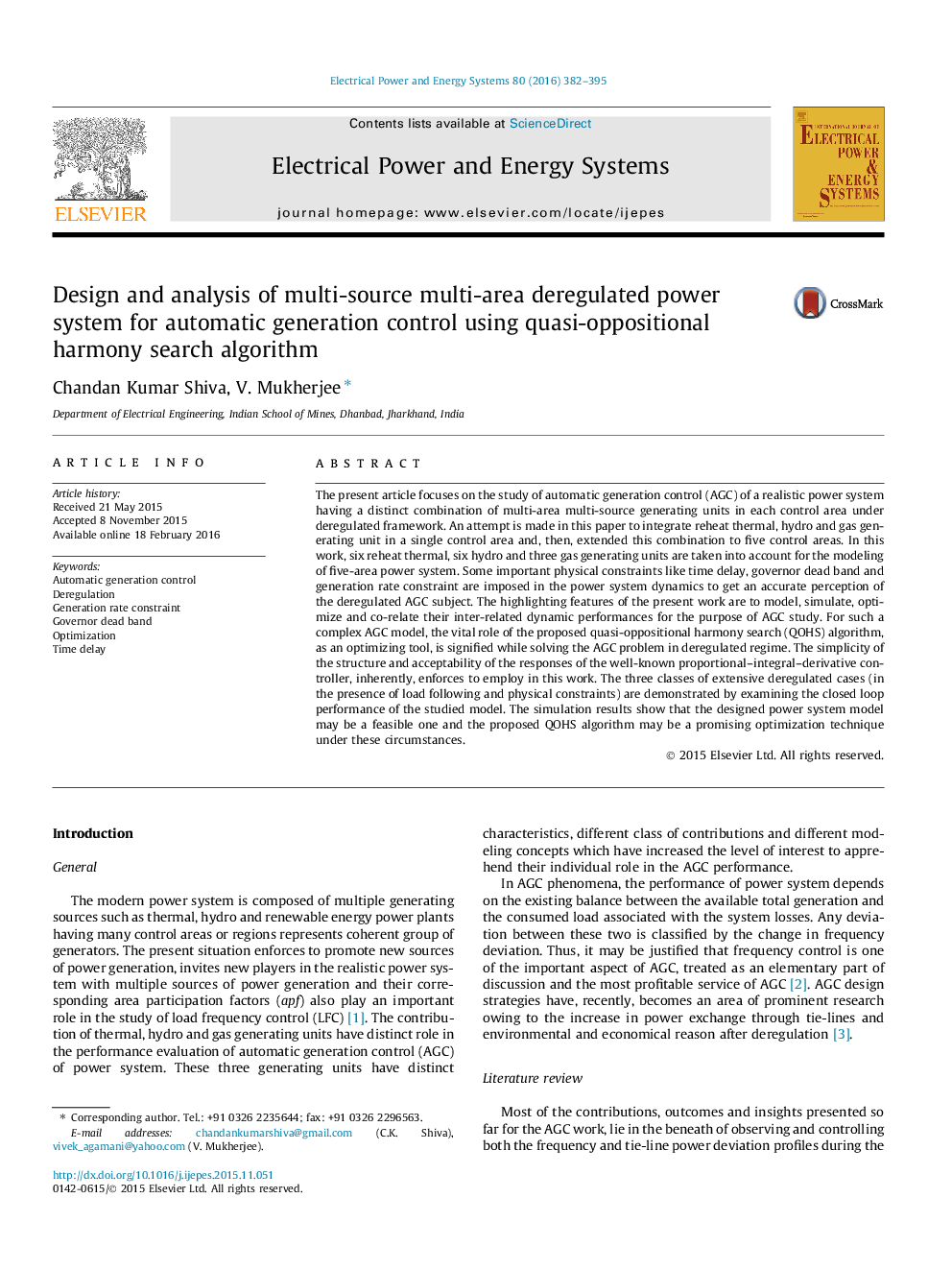| Article ID | Journal | Published Year | Pages | File Type |
|---|---|---|---|---|
| 398289 | International Journal of Electrical Power & Energy Systems | 2016 | 14 Pages |
•Modeling of five-area system with thermal, hydro and gas generating units.•Studied the effects of GRC, time delay and governor dead band.•Incorporation of PID controller with filtering technique.•QOHS is proposed to optimize the designed AGC model, after deregulation.
The present article focuses on the study of automatic generation control (AGC) of a realistic power system having a distinct combination of multi-area multi-source generating units in each control area under deregulated framework. An attempt is made in this paper to integrate reheat thermal, hydro and gas generating unit in a single control area and, then, extended this combination to five control areas. In this work, six reheat thermal, six hydro and three gas generating units are taken into account for the modeling of five-area power system. Some important physical constraints like time delay, governor dead band and generation rate constraint are imposed in the power system dynamics to get an accurate perception of the deregulated AGC subject. The highlighting features of the present work are to model, simulate, optimize and co-relate their inter-related dynamic performances for the purpose of AGC study. For such a complex AGC model, the vital role of the proposed quasi-oppositional harmony search (QOHS) algorithm, as an optimizing tool, is signified while solving the AGC problem in deregulated regime. The simplicity of the structure and acceptability of the responses of the well-known proportional–integral–derivative controller, inherently, enforces to employ in this work. The three classes of extensive deregulated cases (in the presence of load following and physical constraints) are demonstrated by examining the closed loop performance of the studied model. The simulation results show that the designed power system model may be a feasible one and the proposed QOHS algorithm may be a promising optimization technique under these circumstances.
